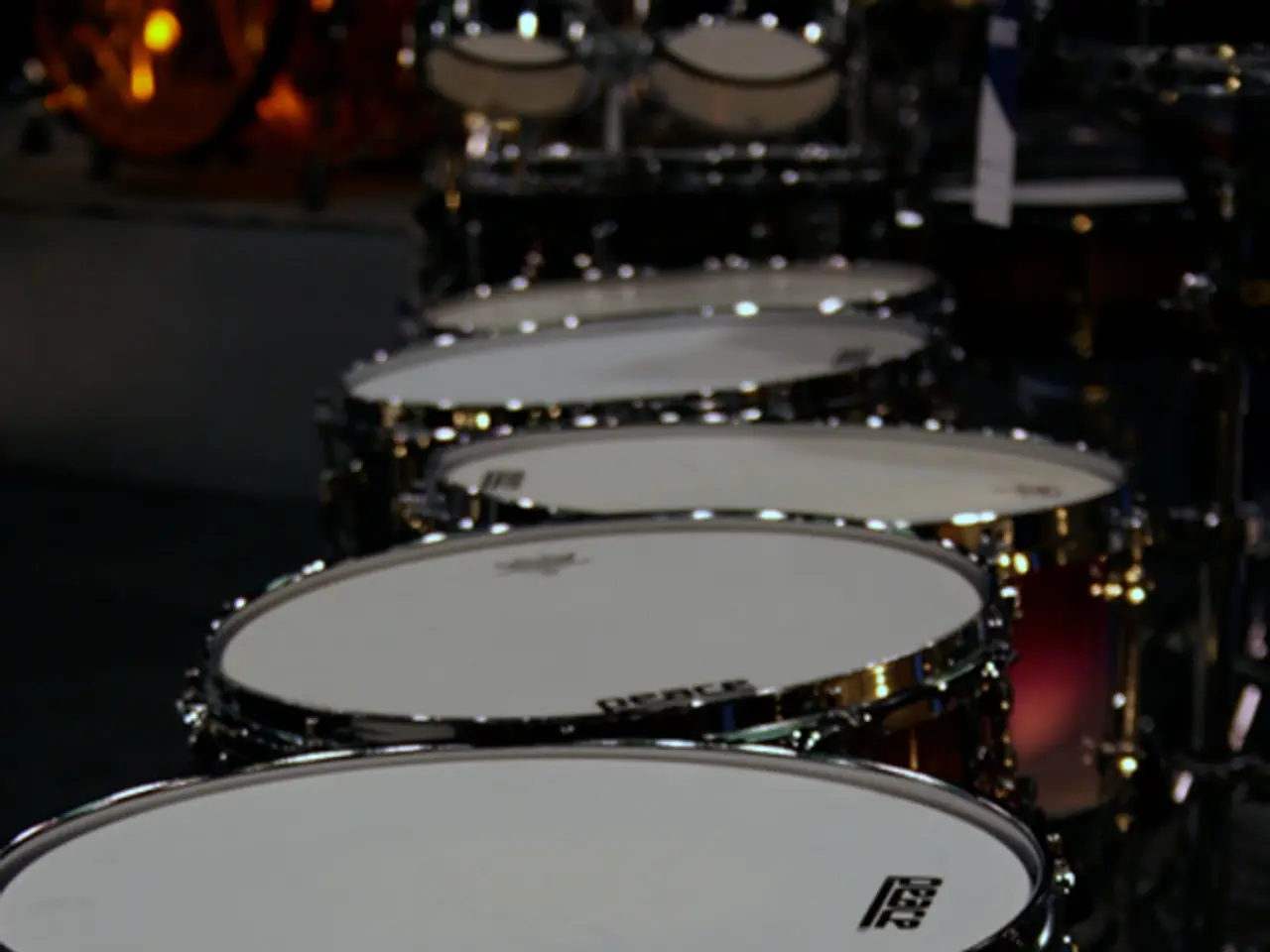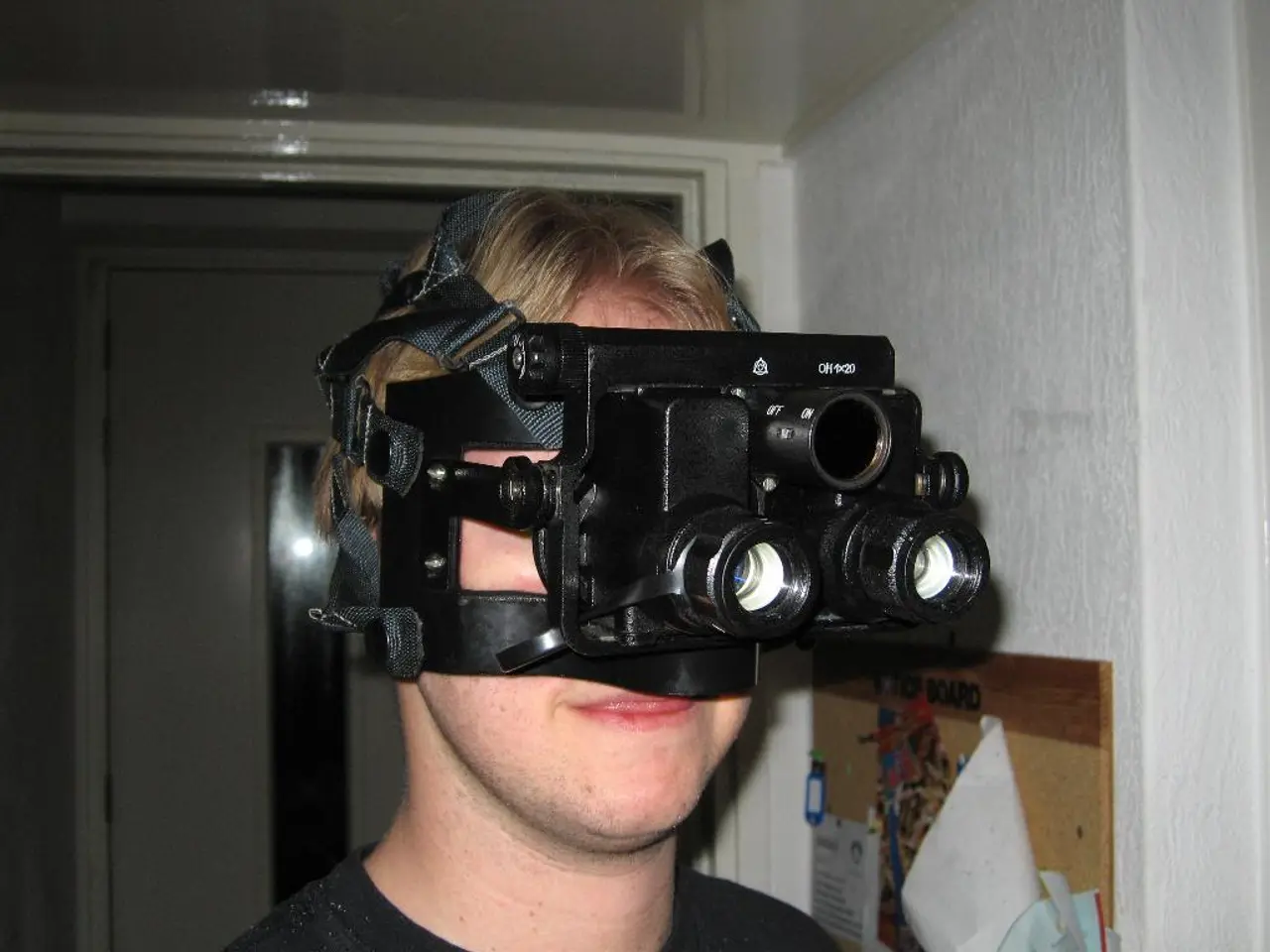Light therapy using LEDs: A look at what it entails and its effectiveness
Home LED light therapy devices, offering a range of benefits for various skin conditions, have gained popularity as a non-invasive, versatile skincare solution. These devices use different wavelengths of light, including red, blue, and green, to trigger the skin's natural healing processes and improve skin health.
Red LED light therapy, with a wavelength of around 633 nm, stimulates collagen production and blood flow, supporting skin healing, reducing fine lines, and improving overall skin firmness and tone. It is useful for general skin rejuvenation and post-treatment recovery.
Blue LED light therapy, on the other hand, is highly effective for reducing acne by targeting acne-causing bacteria. It is often combined with red light to simultaneously treat acne and signs of aging. Convenient for home use with medical-grade LEDs, these devices allow for flexible session times and potentially quicker visible results.
Green LED light therapy helps reduce age spots, hyperpigmentation, fine lines, and wrinkles, promoting youthful, supple, and vibrant skin with consistent use.
However, while the potential benefits of home LED light therapy are promising, it is essential to consider the potential side effects and risks. Mild and transient skin irritation such as redness, slight pain, mild itching, or dryness may occur but usually fade shortly after treatment. Eye safety concerns are significant, especially for blue and green lights; appropriate protective eyewear is essential during sessions to prevent damage.
People on certain photosensitizing medications, those with specific conditions like lupus, porphyria, or very dark skin tones may face contraindications or increased risk of adverse effects. Rarely, improper use or incorrect dosage in red light therapy can cause prolonged redness, blistering, or hyperpigmentation.
To ensure the safety and effectiveness of home LED light therapy, it is advisable to consult a dermatologist or healthcare provider before beginning treatment. Following the device manufacturer’s instructions carefully, especially regarding session duration and frequency, is also crucial to minimize risks and optimize benefits.
In conclusion, home LED light therapy devices can be a gentle, versatile, and effective option to improve skin health, treat acne, reduce signs of aging, and manage pigmentation issues if used properly with attention to safety precautions. As with any skincare regimen, it is essential to prioritise safety and consult with a healthcare professional for personalised advice.
[1] Journal of Cosmetic and Laser Therapy. (2018). Photobiomodulation of Wound Healing: The Clinical Effects of Low-Level Laser Therapy. [online] Available at: https://www.ncbi.nlm.nih.gov/pmc/articles/PMC6288229/
[2] American Academy of Dermatology. (2021). Phototherapy. [online] Available at: https://www.aad.org/public/diseases/a-z/phototherapy
[3] Mayo Clinic. (2021). Light therapy for acne. [online] Available at: https://www.mayoclinic.org/tests-procedures/light-therapy-for-acne/about/pac-20395311
[4] Healthline. (2021). Red Light Therapy for Skin: Benefits, Side Effects, and How It Works. [online] Available at: https://www.healthline.com/health/red-light-therapy-for-skin#uses
- Aging and longevity research suggests that red LED light therapy could possibly improve skin health by stimulating collagen production and increasing blood flow.
- Dermatology has embraced the use of blue LED light therapy for treating acne due to its ability to target acne-causing bacteria.
- Green LED light therapy plays a role in reducing age spots, hyperpigmentation, fine lines, and wrinkles, contributing to the appearance of youthful skin.
- The predictive science behind home LED light therapy devices indicates potential benefits in treating acne, reducing signs of aging, and managing pigmentation issues.
- Arthritis patients may find relief from symptoms through the use of phototherapy, a light-based treatment method in rheumatology, as outlined in various health-and-wellness resources.
- COPD (Chronic Obstructive Pulmonary Disease) patients should be aware that certain fitness-and-exercise practices, particularly those involving exertion, can exacerbate symptoms and should consult with healthcare providers before engaging in such activities.
- Depression management often involves varied approaches, including medication, therapy, and healthy lifestyle changes, such as maintaining a regular fitness-and-exercise routine, adhering to a proper skincare regimen with proven products, and prioritizing mental well-being.




